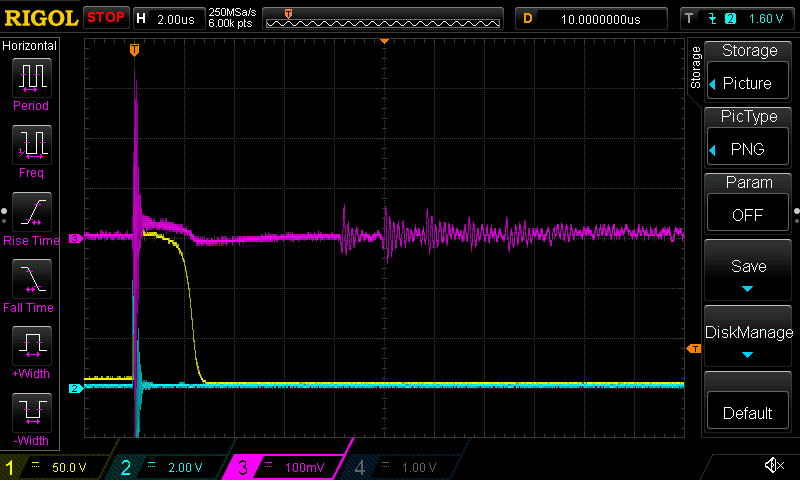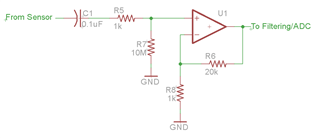Other Parts Discussed in Thread: LMP7718, THS4551, OPA838, OPA365, LMH6703, OPA859, OPA858
Hello,
I am developing an ultrasonic sensor for NDT testing, specifically with the goal of measuring the thickness of metal. I am using a 5MHz dual-element probe (Yushi PT-08A, Link). I will attach the response signal I see with just my 10M/13pF scope probe loading the signal, for reference the signal is about 100mV peak-to-peak and has high-frequency components of about 10MHz. Note I'm planning to use a fast ADC with >20MSPS to read the signal, which accepts input signals up to 1Vp-p and has input bias current of 3uA (specifically we're testing with LTC8365 for now, however if you have a suggestion here we would be open to using a TI ADC).
From my research, most designs here use an LNA followed by a VGA. I'm not quite sure if these need to be separate and am hoping you would help me select appropriate part(s). I think the most important specs are low noise (e.g. <1nV/sqrt(Hz)), low input bias current (<10pA), and high bandwidth (>20MHz at least, although with gain perhaps >200MHz). We want to operate off a single 3.3V rail.
So far, the best results I've gotten are with an OPA356 setup as a non-inverting amp with 1k and 50 ohm resistors in the network (giving gain of 20). I don't quite understand what happens to the signal, but I very much like the result as it clearly separates the rings. I do note that the noise figure is a bit higher than 1nV/sqrt(Hz), however still fairly low. Also this is just a normal op-amp so the gain would be set via hardware resistor values which is okay, although having it be programmable may be a nice feature.
Can you help suggest part(s) we should use? Would we benefit from separating to two separate amps, or as long as we meet our specs and don't need much gain are we okay with a single amp? I'm not clear on how the voltage noise (nV/sqrt(Hz) would be affected when using two amps (e.g. do the figures add, multiply, or does only the first amp's noise figure count)?
I appreciate any insight you may have.
Kind Regards,
-Jon





